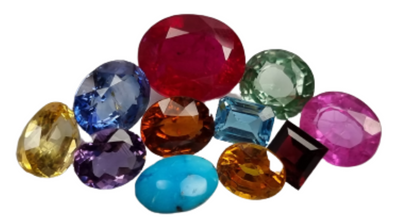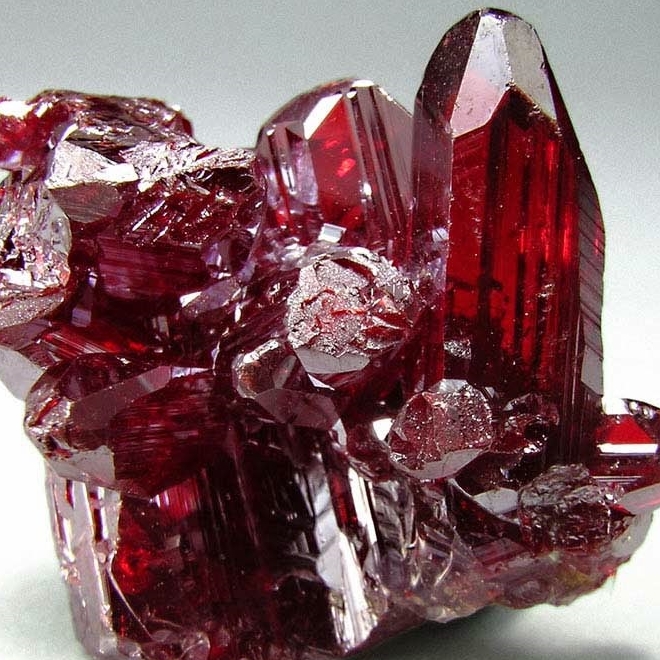Proustite: Gemstone Information
Proustite, also known as ruby silver or silver sulfarsenide, is a rare mineral that holds significant importance in the realms of both mineralogy and history. Its name pays homage to the French chemist and crystallographer Joseph Louis Proust, who made notable contributions to the field of chemistry in the late 18th and early 19th centuries.
Chemical Composition and Structure:
Proustite is a sulfosalt mineral composed primarily of silver sulfarsenide (Ag3AsS3). Its chemical formula reflects its composition: Ag3AsS3. Structurally, it crystallizes in the monoclinic crystal system, forming prismatic crystals with a characteristic deep red to crimson color. This vivid hue is a result of its high silver content, which imparts a ruby-like appearance, hence the nickname “ruby silver.”
Physical Properties:
Proustite exhibits several distinct physical properties:
Color: Its most notable feature is its intense red color, which ranges from deep crimson to ruby-red.
Transparency: It is typically translucent to opaque, with the transparency varying depending on the specific specimen.
Luster: Proustite has a adamantine to vitreous luster, giving it a shiny appearance when polished.
Hardness: It has a Mohs hardness of approximately 2.5 to 3, making it relatively soft compared to many other minerals.
Density: The density of proustite ranges from 5.57 to 5.59 g/cm3, indicating a relatively high density.
Occurrence:
Proustite is a rare mineral, and its occurrence is often associated with hydrothermal veins in silver-rich ore deposits. It commonly forms in association with other silver minerals such as native silver, argentite, and pyrargyrite. Significant deposits of proustite have been found in various regions around the world, including Germany, Mexico, Chile, Bolivia, and the United States.
Historical Significance:
The striking appearance of proustite has made it a coveted mineral throughout history. Its deep red color, reminiscent of rubies, has earned it a place in jewelry and ornamental objects, especially during the Victorian era. However, its primary importance historically lies in its role as an ore of silver. Due to its high silver content, proustite has been mined for centuries as a source of this precious metal. In the 19th and early 20th centuries, proustite was particularly valued for its silver content, and significant mining operations were established in regions where it was abundant.
Modern Applications:
While proustite is no longer as extensively mined for its silver content as it once was, it still holds significance in various modern applications. Its vivid red color makes it a sought-after collector’s mineral and specimen for enthusiasts and museums alike. Additionally, proustite continues to be used as a minor ore of silver, with some mining operations still extracting it alongside other silver-bearing minerals. In recent years, proustite has also garnered attention in the field of mineralogy and crystallography due to its unique crystal structure and chemical composition, contributing to scientific research and understanding in these areas.
Conclusion:
Proustite, with its striking red color, historical significance, and modern applications, remains a fascinating mineral with a rich and storied past. From its association with renowned chemist Joseph Louis Proust to its use as a source of silver and its enduring allure in the world of mineral collecting, proustite continues to captivate the imagination of scientists, collectors, and enthusiasts around the globe.





